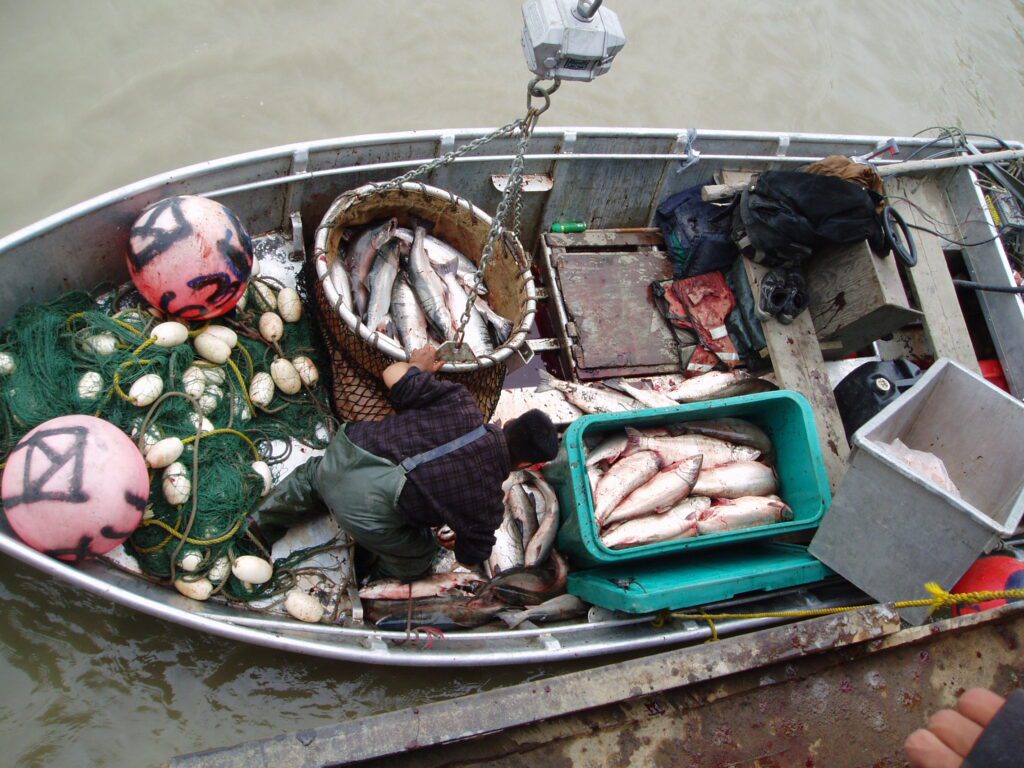Early next year, a long-absent animal will return to Western Alaska.
Wood bison, which have been extinct in the state for over one hundred years, will be released along the Lower Yukon River near Shageluk in the spring. The release is part of a joint conservation effort by the Alaska Department of Fish and Game, the U.S. Fish and Wildlife Service, and the Canadian government.
Until recently, wood bison were protected under the Endangered Species Act. While they had gone extinct from the United States altogether, researchers discovered a disease-free population of the bison in Northern Canada – a breeding herd that has since grown to more than 500 animals.
In late March of next year, a group of 40 to 100 Canadian wood bison will be transported from the Alaska Wildlife Conservation Center in Portage – where they have been acclimating to the Alaskan climate since 2008 – to the Lower Yukon Valley.
“It’s called a soft release,” said Rita St. Louis, a planner for the Alaska Department of Fish and Game in Fairbanks. “They’ll be fed hay for a while. Then [we’ll] coax them across the river with hay, like Hansel and Gretel following cookie crumbs. Then as soon as green-up comes, they’re on their own.”
St. Louis said the bison have been designated a “non-essential, experimental population,” which means that the strict regulations normally afforded a protected species will not apply to these particular bison.
“These animals are treated like any other animal in Alaska. If it’s legal to do, you can do it with these animals,” said St. Louis.
This special provision, called the 10-J rule, will allow for commercial and subsistence-based land use in the same territory as the protected bison. It will also protect subsistence users from being federally charged in the instance of incidental take. ADF&G has expressed hope that this provision will make humans in the area more amenable to sharing the land with their bison neighbors.
Joy Hamilton, an elementary school teacher in Shageluk, said she’s looking forward to the bison’s arrival – but doesn’t view it as a homecoming for the long-absent animals.
“It would be a whole new introduction, rather than a re-introduction from my point of view,” Hamilton said. “The landscape has changed, the environment has changed…since we have any record of wood bison in this particular area.”
Hamilton added that this could pose a unique cultural challenge for communities in the region.
“All these animals we have had a relationship with, and we have stories about them,” she explained. “Moose, and birds, and beavers – even mice and frogs. But there are no stories about bison. So this is going to be a new thing for us. Creating our own cultural connection and respect for the animal.”
There are also practical concerns. At a public meeting to discuss the release, subsistence users in Shageluk wanted to know how the bison might impact food sources like berries, whether they would attract predators like wolves, and who would determine how the animals are managed. Many also asked: How would the wood bison taste?
Though ADF&G estimates that it will be nine to fifteen years, at least, before the wood bison population grows to a point where it could be used as a subsistence resource, a spokesperson did bring bison jerky for community members to taste.
“They tasted like Slim Jim beef sticks,” said Hamilton. “They didn’t taste any different than anything else.”
While Hamilton is more interested in the wood bison as a teaching opportunity for her students, she does have a suggestion for future advocates hoping to persuade subsistence users in the region: Next time, bring bison steak.







